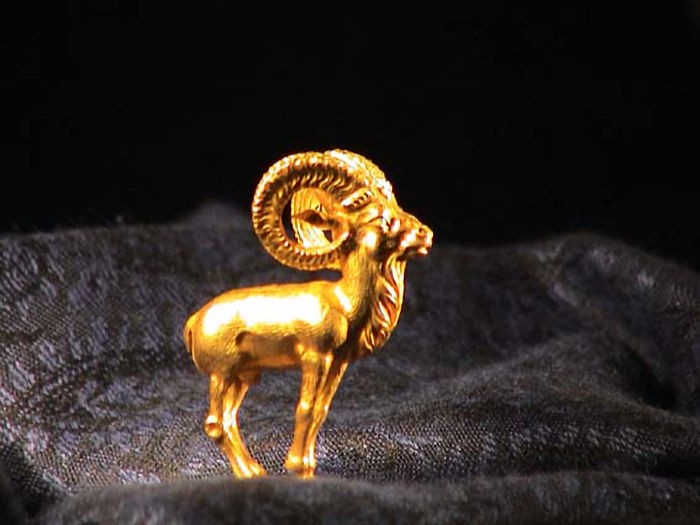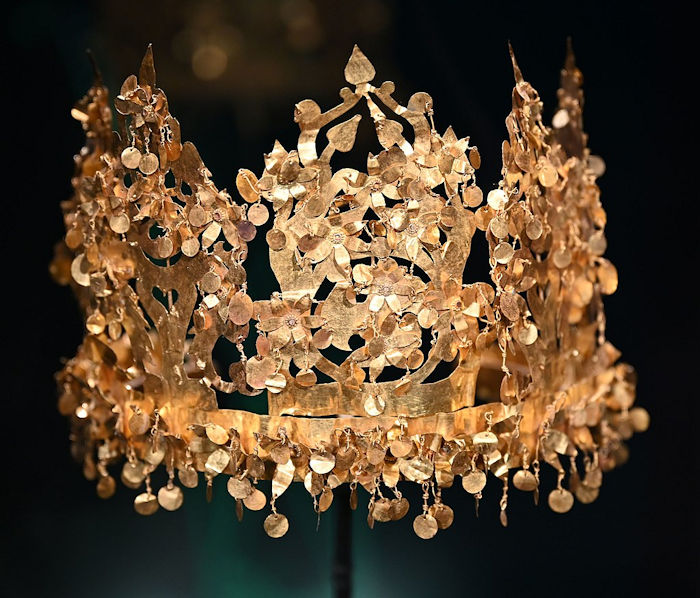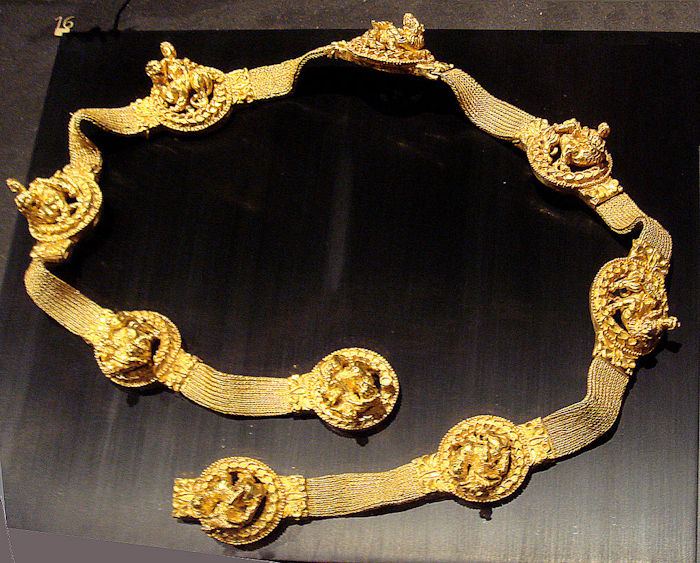Conny Waters – AncientPages.com – One of the most magnificent and valuable ancient treasures of its time is the Bactrian Hoard.
Discovered in the graves belonging to six wealthy Asian nomads, five women, and one man, the 2,000-year-old Bactrian treasure consists of more than 20,000 objects, including golden rings, coins, weapons, earrings, bracelets, necklaces, weapons, and crowns.
These beautiful ancient items were uncovered in 1978 in the Tela Tapa area of Sherberghan district, the center of northern Jawzjan province, Afghanistan. Several of the astonishing ancient objects are from the Yuezhi nomadic invasions.

A ram figurine found in the Bactrian hoard. Credit: Robert Kluijver – Public Domain
The Yuezhi civilization was ancient Nomadic people who once ruled Bactria.
Ancient Bactria was located between the Hindu Kush Mountain range and the Amu Darya river, covering the flat region we recognize as modern-day Afghanistan and Tajikistan.
The Yuezhi were involved in many conflicts. They fought the Tocharians, Scythians, and even the Han Empire in Central Asia.
When the Yuezhi entered Bactria, they defeated the Greco-Bactrian kingdom, forcing them to regroup in India. They also displaced a people called the Saka, who responded by overrunning portions of the Parthian Empire.
“The Bactrian treasure was brought to the presidential palace by the former government in February 2021 and was put on display for public viewing. However, after the collapse of the former government, concerns were raised over its safety,” the Hindustan Times reports.

A golden crown found in one of the Bactria graves. H Sinica – CC BY-SA 2.0
Since the finding of the Bactrian Hoard, this ancient treasure has toured museums worldwide. Unfortunately, it has been reported that some of the exquisite prehistoric items are missing.
Whether the artifacts have been stolen, destroyed, or deliberately hidden is unknown.
Many feared the looting of ancient artifacts would become a problem in Afghanistan when the Taliban took over the country’s government. According to recent reports, pieces showed up in neighboring Iran were reportedly from Afghanistan’s jewelry-rich Bactrian Treasure hoard.
In an interview with the Financial Times, Gil Stein, professor of Near Eastern archaeology at the University of Chicago, expressed fear that these ancient artifacts may be kept in Iran and melted. “It’s a piece of history. In all conflict zones, this happens,” Stein said.
Stein also added that though it may be challenging to stop artifacts from being looted and smuggled out of the country, it is vital to alert everyone, from dealers to consumers. There is no room for ignorance, and the main focus must be to protect the cultural heritage, Stein said.

Belt from Tillia Tepe, with depictions of Dionysus riding a lion, Credit:Media Viewer – CC BY-SA 3.0
The Taliban ministry of information and culture has said they have begun efforts to track and locate the Bactrian treasure.
Ahmadullah Wasiq, deputy head of the cultural commission of the Taliban interim cabinet, said his country had ᴀssigned the relevant departments the task to find and check on the Bactrian treasure.
“The issue is under investigation, and we will collect information to know what the reality is. If it has been transferred (out of Afghanistan), it is treason against Afghanistan.
“The government of Afghanistan will take serious actions if this and other ancient items are moved out of the country,” Wasiq said.
Written by Conny Waters – AncientPages.com Staff Writer





